#Dornier Do 27
Explore tagged Tumblr posts
Text

German Dornier Do 27 spotted at Fife Airport, Glenrothes, Scottland
39 notes
·
View notes
Text

Portuguese officer next to a Dornier Do-27(K) equipped with a 37mm rocket launcher, Mozambique.
23 notes
·
View notes
Text
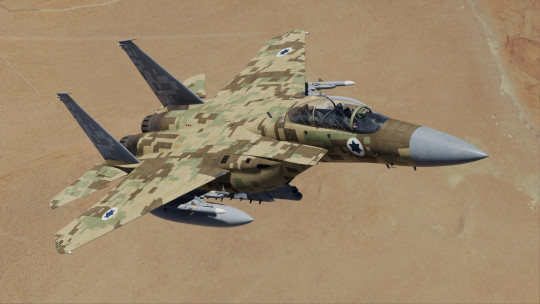
Fearing war with Iran, Israel asks the United States to approve the sale of 25 F-15EX fighters soon
Fernando Valduga By Fernando Valduga 04/02/2024 - 19:47 in Military
The consequences of the Israeli airstrike on the Iranian Embassy in Damascus, Syria, on April 1º 2024, may mean that Israel defied an open war with Iran. Although it is militarily superior in the Middle East, and always has the support of the United States, the many fronts that Jews have to face make Israel need to prepare for various scenarios. One scenario to face the war with Iran and other Middle Eastern countries is to request the accelerated delivery of the purchase of 25 F-15EX fighters.
President Joe Biden's administration is considering whether to authorize the huge $18 billion arms transfer package to Israel, which includes the acquisition of dozens of F-15EX fighters along with weapons, three sources familiar with the matter said.

The sale of 25 Boeing F-15EX jets to Israel has been under review since the United States received a formal order in January 2023, one of the sources said. Accelerating the delivery of the planes was one of the main requests of the Israeli Defense Minister, Yoav Gallant, who visited Washington last week and held talks with those responsible ?? Americans, including National Security Advisor Jake Sullivan and Secretary of Defense Lloyd Austin.
Seeing the escalation that is taking place in the Middle East, a source said that the U.S. is now considering accelerating the sale of F-15EX fighters to Israel. The Israeli Air Force also said it intends to double the number of orders in question.

The official Request Letter (LOR) for the purchase of the F-15EX fighters was sent by the Israeli Government to the U.S. Government last week. LOR is the first stage of the Foreign Military Sales (FMS) process. Indonesia had already submitted a LOR for the F-15EX acquisition plan. After sending the LOR, only then will the Agency for Cooperation for the Security of Defense (DSCA) disclose the information of the offer along with the value of the sale.
The Israeli Air Force wants 25 new F-15EX and, in parallel, will also upgrade 25 of its F-15I variants to the same avionic configuration as the F-15EX, except for the fly-by-wire system. The Israeli Air Force currently operates 50 F-15 A/B/C/D variants and 25 F-15I variants.

F-15I
When Israel made the decision to buy more F-15 and F-35, it was based on the assumption that in future combat scenarios the targets would be protected by advanced air defense systems. This would require the first wave of F-35 to neutralize the enemy's air defense systems and then the role of the F-15 to carry out subsequent attacks on enemy territory.
Although Israel has asked to speed up the acquisition of the F-15EX and Washington is considering doing so, on the other hand, it is not easy for Boeing to accelerate the production of the F-15EX, unless this is done through a 'change' in the production queue of the F-15EX (Eagle II) commissioned by the U.S. Air Force (USAF).
Tags: Military AviationBoeingF-15EXIAF - Israeli Air Force/Israel Air Force
Sharing
tweet
Fernando Valduga
Fernando Valduga
Aviation photographer and pilot since 1992, he has participated in several events and air operations, such as Cruzex, AirVenture, Dayton Airshow and FIDAE. He has works published in specialized aviation magazines in Brazil and abroad. He uses Canon equipment during his photographic work in the world of aviation.
Related news
MILITARY
Boeing receives first P-8A anti-submarine aircraft for upgrades
02/04/2024 - 16:00
MILITARY
Second prototype of the Bayraktar TB3 combat drone completes 27-hour flight test
02/04/2024 - 14:00
FIDAE
FIDAE: ENAER will present the progress in the project of Chilean coach PILLAN II
02/04/2024 - 13:00
MILITARY
Light aircraft transformed into a drone attacks Russian UAV factory 1,200 km from Ukraine
02/04/2024 - 12:00
MILITARY
Guyana receives Dornier 228 planes from India
02/04/2024 - 11:00
MILITARY
Sultanate of Oman is interested in the Rafale of Dassault Aviation
02/04/2024 - 09:00
19 notes
·
View notes
Text




IMAGENES Y DATOS INTERESANTES DEL DIA 5 DE MAYO DE 2024
Día de la Madre, Día Mundial de la Risa, Día Mundial de la Higiene de Manos, Día Internacional de la Matrona, Día Mundial del Patrimonio Africano, Día Mundial de la Hipertensión Pulmonar, Día Mundial de la Lengua Portuguesa, Año Internacional de los Camélidos.
San Peregrino.
Tal día como hoy en el año 2023
La OMS declara el fin de la emergencia sanitaria de la pandemia de COVID-19, tras haber estado vigente durante más de 3 años, desde el 30 de enero de 2020.
1979
La empresa Dornier presenta un aparato que emite ondas de choque (pulso acústico) y es capaz de destruir las piedras del riñón.
1961
Después de que la URSS haya puesto el primer ser humano en órbita espacial el pasado 12 de abril, Estados Unidos lanza al espacio su primera astronave tripulada con Alan B. Shepard como piloto, en un vuelo suborbital a bordo de la cápsula Mercury 3 que ha sido bautizada como "Freedom", alcanzando una altitud de 187 km. en un viaje de tan sólo 15 minutos de duración frente a los 108 minutos del vuelo de Gagarin. La carrera espacial se halla en plena ebullición. (Hace 63 años)
1960
El presidente soviético Nikita Kruschev, informa al Soviet Supremo de la URSS, que el día 1 de mayo un avión espía norteamericano U-2 fue abatido por los disparos de los antiaéreos soviéticos, resultando apresado su piloto, Francis Gary Powers. En relación con el vuelo añade que lo califica como un "acto de agresión" de los Estados Unidos. La tensión internacional se incrementa en plena Guerra Fría. (Hace 64 años)
1912
Con la presencia de 28 países y 2.359 deportistas, se inauguran en Estocolmo (Suecia) las V Olimpiadas de la Era Moderna. Se clausurarán el 27 de julio. (Hace 112 años)
1887
En Lima, capital de Perú, Ricardo Palma Soriano funda la Academia Peruana de la Lengua, cuya primera actuación pública tendrá lugar el 30 de agosto de este mismo año en el Paraninfo de la Universidad Nacional Mayor de San Marcos, eligiendo como su primer presidente al Dr. Francisco García Calderón y Landa, que en 1881 había sido Presidente Provisional de la República. (Hace 137 años)
1886
En Atlanta (EE.UU.), John Pemberton patenta la Coca-Cola, bebida de color verde a base de extractos de hojas de coca, nuez de cola, azúcar, caramelo, agua purificada y gas carbónico. A partir de 1919, Coca-Cola se expandirá por el extranjero alcanzando gran popularidad. (Hace 138 años)
1862
En la batalla de Puebla (México), las tropas nacionales repelen a las fuerzas francesas de Napoleón III, una victoria que se convertirá en símbolo de la resistencia a la dominación extranjera y se celebrará como fiesta nacional, cada Cinco de Mayo. (Hace 162 años)
1860
En Italia, Giuseppe Garibaldi, junto con un grupo expedicionario formado por tan sólo 1.000 camisas rojas, inicia la marcha hacia Sicilia, para luchar contra los Borbones del reino de las Dos Sicilias. Esta hazaña terminará de consagrarlo como una figura mítica de la historia de Italia al conquistar el poderoso reino de Sicilia y Nápoles. (Hace 164 años)
1808
En Bayona (Francia), el destronado rey Carlos IV de España, donde ha sido llevado junto con toda su familia por orden de Napoleón I, abdica en favor del Emperador. Al día siguiente Napoleón conseguirá que el resto de la familia real renuncie a todos sus derechos y el día 10, logrará la renuncia del mismísimo rey Fernando VII en favor de su padre, Carlos IV, sin saber que éste había cedido sus derechos en favor de Napoleón. (Hace 216 años)
1789
Se reúnen en el palacio de Versalles (Francia), por primera vez desde hace 175 años, los Estados Generales, asamblea con representantes del clero, nobleza y burguesía. Con este gesto, la monarquía de Luis XVI que se halla al borde la bancarrota y distanciada de parte de la aristocracia, trata de calmar la agitación social que recorre el país desde hace años. (Hace 235 años)
1648
Los cosacos polacos, al mando de su caudillo Bogdan Jmelnistki, derrotan a un ejército de nobles polacos en la batalla de las Aguas Azules, cerca de Siniuja, Ucrania. Los cosacos y los campesinos ucranianos se oponen a la política represiva del rey polaco Ladislao IV. (Hace 376 años)
1518
El capitán y conquistador español Juan de Grijalva, tras haber zarpado de Cuba el pasado 1 de mayo, toma posesión de las islas de Yucatán, Cozumel, Cicia, Costilla y otras, en nombre de los monarcas españoles. (Hace 506 años)
985
Sale de campaña de la ciudad de Córdoba, actual España, el ejército de Almanzor, caudillo del Califato de Córdoba. La expedición culminará el día 6 de julio con el asalto y conquista de Barcelona. Lleva consigo alrededor de 40 poetas asalariados para que narren sus victorias. (Hace 1039 años)
553
Reunido por el emperador Justiniano, por ausencia del papa Vigilio, se inicia las sesiones, ocho en total, del Segundo Concilio de Constantinopla (la actual ciudad de Estambul, en Turquía) en el que se tratará de solucionar las discrepancias existentes y atraer a los descarriados monofisitas entre los cuales se han formado muchas fracciones en amplias zonas de Oriente, sobre todo en Egipto. El papa Vigilio, presionado por Justiniano con el destierro, tendrá que aceptar íntegramente las decisiones surgidas del concilio. (Hace 1471 años)
1 note
·
View note
Link
0 notes
Photo

Dornier Do 27 with (German) track landing gear
10 notes
·
View notes
Text
Did you know that some SW characters resemble from real-life planes?
Donnie resembles a Canadair CL-415.


Bello resembles a Dornier Do-27.


Jerome resembles a Boeing F/A-18 Super Hornet (Blue Angels livery).


Let me know if there's more!
16 notes
·
View notes
Text
ok so
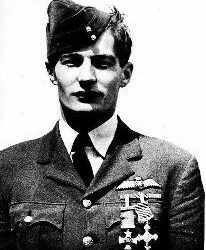
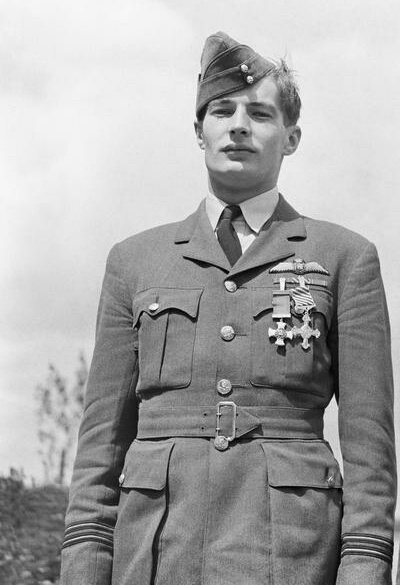
this young fella is No. 85 Squadron’s Hurricane pilot Richard Lee. he was awarded the DFC and DSO for his service, just a couple months before he was shot down over the English Channel on 18/8/1940, at age 23, sadly never to be seen again.
details under the cut -
Richard Hugh Anthony Lee was born in London in 1917 (the exact date or month is unknown). Growing up, he went to Charterhouse School.
On September 1935 he joined RAF Cranwell as a Flight Cadet, and graduated in July 1937. He was posted to Debden on June 1, 1938 to join no.85 Squadron at its reformation. He flew Gloster Gladiator biplanes to begin with, before no.85 was re-equipped with Hawker Hurricane Mk1s.

No.85 sqn. Was posted in France to protect cross-channel convoys. On November 21, 1939, while on patrol over Boulogne, Flight Lieutenant ‘Dickie’ Lee scored the squadron’s first victory when he successfully attacked a Heinkel 111 which crashed into the channel and burst into flames. This also scored the Squadron’s first accolade as he was awarded a DFC on March 8, 1940 “for outstanding brilliance and efficiency”
Not much happened over the winter. That was to change, however, when on May 10, 1940, the sound of Anti Aircraft guns and Luftwaffe planes filled the air. No. 85 squadron immediately jumped into action, and within a few minutes, one section of “A” flight, and one section of “B” flight were up in the air. Lee was leading B flight with Flying Officer Derek Allen and Pilot Officer Patrick Woods-Scawen flying as his numbers 2 and 3 respectively. the section attacked a Henschel 126, and managed to severely damage the aircraft, leaving two of its crew wounded.
Later that morning, Lee was flying Hurricane L1779 into combat, leading his section again. They engaged a Junkers-88 at about 15,000 feet. His combat report reads: “after being sighted E/A dived to a very low height. i could only overhaul from astern very slowly. From 500 yards to 700 yards the enemy rear gunner fired continuously. I fired short bursts and finished ammunition closing to 200 yards. No apparent results except black smoke from one engine. My own aircraft shot badly.”
Later that evening Lee shared in the destruction of a Ju-86 with his section. Lee was the first to open fire and set the enemy’s starboard engine on fire. When they landed, ground crew found that he had fired 50 rounds from each of his eight Browning machine guns during the engagement.
on 11/5/1940, the squadron was back in the thick of it. however, this time after a busy morning patrol, Allen and Woods-Scawen returned without their section leader. Richard Lee was missing. He’d been flying Hurricane N2388, code marked ‘VY-R’ over Maastricht when he engaged a Dornier 17P at approximately 1300 hours. His aircraft had been hit by Anti Aircraft fire and he bailed out of his aircraft slightly wounded. Parachuting down, he landed in a field, where he spotted a local man passing by. He asked the man which direction he should travel to get to the Belgian tanks that were nearby. He took off in the direction, only to find out that they were, in fact, German. Lucky for him, his uniform was concealed underneath a smock or overcoat he had acquired. He was believed to be a peasant and was locked into a barn with some other refugees. Thinking quick, he climbed up to a window and noticed a ladder perched beneath it, and promptly climbed out, walked several miles, and hitched a ride with some Belgians before returning to his unit the very next day. The squadron’s diarist reported that “11/5/40. Eight E/A were shot down today. Flight Lieutenant R.H.A Lee failed to return from the offensive patrol covering the advance of the BEF over the Tongres-Maastricht Section – he was reported last seen on a Dornier’s tail at about 2,000 ft.”
On May 22, No. 85 squadron started to return to Debden to re-equip and reform, and Lee was transferred to No. 56 Squadron. The next day the squadron engaged enemy aircraft over St. Omer while patrolling Manston to Dunkirk. he expended all his ammunition in the dogfight that ensued between the Hurricanes and the 109s, before his starboard wing was badly hit. He broke off and returned to Manston unharmed, and aircraft deemed repairable.
On May 27, he flew another offensive patrol from Manston with the Squadron, flying Hurricane P3311. On this occasion he was shot down by Messerschmitt 109s during an attack on Henschel 111s. he ditched his aircraft in the sea and was fished out of the water and taken ashore an hour later.
On May 31, Lee was awarded the DSO. The London Gazette published the following: “Flight Lieutenant Richard Hugh Anthony Lee, D.F.C. (33208) this officer has displayed great ability as a leader and intense desire to engage the enemy. On one occasion he continued to attack an enemy aircraft after his companion had been shot down, and his own machine hit in many places. His section shot down a Dornier 215 in flames one evening in May, and another in the course of engagement the next day. In his last engagement, he was seen at 200 feet at the tail of a Junkers 89, being subjected to intense fire from the enemy occupied territory. This officer escaped from behind the German lines after being arrested and upheld the highest traditions of the Service.”
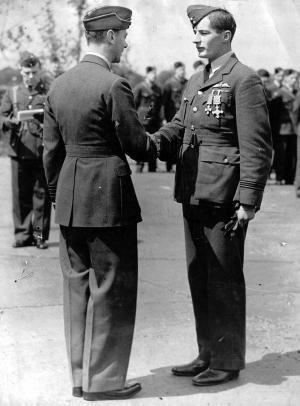
In June, he returned to No. 85 squadron, under Squadron Leader Peter Townsend. His experience was called upon to help bring the new recruits upto scratch before the squadron was again ready for operational flying.
On June 26, Richard Lee and his close friend Gerald Lewis flew to an investiture where Lee received his DSO and DFC for his service.
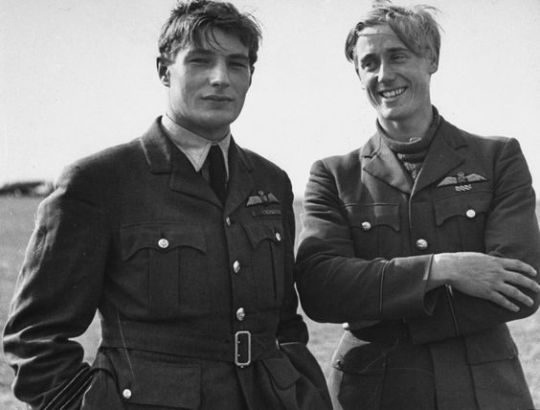
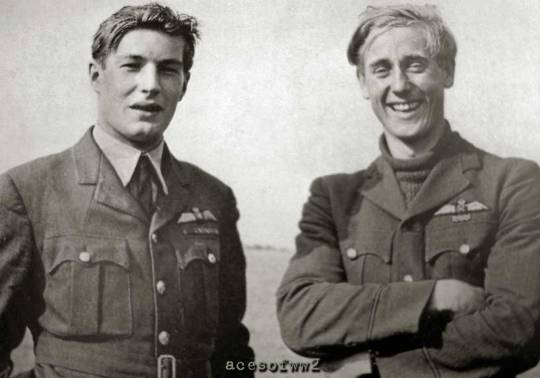
Lee’s reputation as a daring and aggressive fighter pilot was quickly spreading around the air force. Peter Townsend’s good friend Flight Lieutenant John Simpson wrote a letter to his intelligence officer, after hearing about the exploits of Richard Lee.
Simpson, who also coincidentally often flew with Patrick Woods-Scawen’s younger brother Tony, wrote “I hear that Dickie Lee has done wonders. You see how these boys, who were always looked upon as being the naughty ones, are doing so well. They needed a war to convince the old gentlemen at Whitehall. Do you remember that Dickie was almost given his bowler hat for low flying? The same low flying has apparently stood him in good stead.” (apparently he had flown through an open barn, but i have no way of confirming or denying that)
In Hector Bolitho’s book Combat Report published in 1943, he wrote of an afternoon spent with Lee, Townsend and Simpson. “Peter Townsend and Dickie Lee had been posted to an aerodrome a few miles from the house… in the early summer, John and I went out to find them… we found Peter and Dickie and took them back to the house. Dickie followed the car on a hellish motor bicycle.
It was a pleasant enough afternoon and we lay on the lawn, the four of us, with a bowl of ice, a bottle of gin, some tonic water and four glasses, and talked the world away. All three, looked older. Both Dickie and Peter had been shot down and a certain solemnity seemed to have touched them. Dickie had changed more than others.
We used to call him Dopey in the old days because he always fell asleep if the conversation took a serious turn. He was already a hero and in most newspapers there had been photographs of him receiving his decorations from the King. The long hell in France had left creases at the corners of his sleepy eyes. But he would have none of our attempts at war talk. He said that he had a date with a blonde in Saffron Walden and that he could not stay very long.
Dickie’s taste in blondes was not always reassuring to his friends, but he was obviously more concerned with his date than with our efforts to make him talk about how he has won the DFC and DSO on his tunic. I remember when he stood to go I noticed a hole in the leg of his trousers where a bullet had gone through without touching his skin.
I suppose that Peter and John and I were a bit pensive, being the older ones, so Dickie yawned and said ‘Well, I must get cracking’ he made one gesture to sentiment before he went. On the day that was declared he left his favourite pictures with me… before his squadron flew off to France.
They were photographs of friends, of aircraft, and one of a spaniel. He asked me for them, so I brought them down from the attic and he flew off to his blonde with them, piled before him on the screeching, violent motor bicycle.”
August 18, 1940 “the Hardest Day” of course, was when Dickie was lost. Flying as Blue 1 in Hurricane P2923 ‘VY-R’ during this patrol, he was last seen by Squadron Leader Townsend and Flying Officer Arthur Gowers ten miles north-east of Foulness Point chasing Bf 109s out across the Channel.
In Townsend’s book Duel of Eagles he wrote the following of Lee’s last action: “Come back, Dicky,’ I called but he was drawing away. Again and again I called, but he kept on. It was useless to chase Huns out to sea; they would be back again the next day. Something had gotten into Dicky and there was no stopping him. We were both low on fuel and I was out of ammunition. There was only one thing to do: turn back”
Like several others, he was gone too soon. Neither his aircraft nor his body were ever recovered. and aside from these mentions, and a few documents, and acknowledgement on the Runnymede Memorial, Panel 6, there isn’t much about him out there. there’s really not much one can do about that either, other than remember, and keep them alive in our thoughts; those who never returned, whose names faded into obscurity.
Source
#my last post was glitching out so i had to make a new one#sigh. i miss him. that 'age 23' really hits hard man#history#ww2#wwii#battle of britain#raf#1940s#1940#need i repeat it again ? war bad.#i wish he had a happy ending like charlie and gertie in that other post but alas#also this is all the information i could find about him on the internet#that blogspot article is the only comprehensive source#there's just tiny bits and pieces of him scattered in databases and they're not much use at all to be quite honest#there is only one thing i know right now and that is that i miss him dearly for some reason#even though i dont even know anything about him except all of.... this#and the pictures in this post are all the pictures of him that are out there#i mean there's more but they're just colourisations of these#especially of the one with his pal lewis#and the one in which he's standing with the medals on his uniform#sweet boy i miss him. precious lad.#i say knowing absolutely nothing about him#like he was literally just some guy. he wasn't famous or anything. there aren't even any letters by him out there#so that i can even start to build an accurate profile. i guess all that i have is the photos and mentions#and where are those photos that he took with him ? did they go with him ? or are they in someone's basement#forgotten and neglected. or did they get destroyed ? where are they !#my best hope is that they're somewhere out there in a basement or something along with a pile of letters#his body or plane were never recovered and that makes me want to cry and sob and weep#i pretty much am over my other crush but this man has been on my mind for over a year now#its like sir please
49 notes
·
View notes
Text
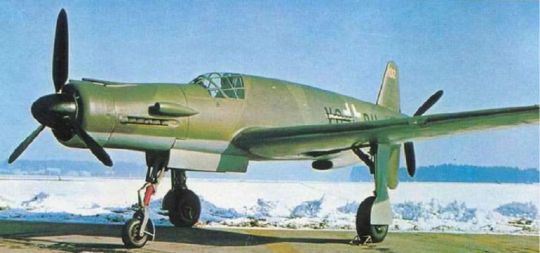
-A Dornier Do 335 Pfeil on a snowy runway, some time in 1944 or '45. | Photo: Luftwaffe
FLIGHTLINE: 181 - DORNIER DO 335 PFEIL ("ARROW")
Initially designed in response to a request for a Schnellbomber, the Do 335 was reconfigured into a multi-role aircraft, though only a few were completed before Germany surrendered.
Claude Dornier founded the Dornier Flugzeugwerke ("Aircraft factory") in 1914, and was renowned for building large, all-metal flying boats as well as land-based passenger aircraft between the Great War and WWII. These included the record-breaking Do 16 Wal ("Whale") of 1924, the Do X of 1929, and the Komet ("Comet") and Merkur ("Mercury"), a favorite of Lufthansa and SCADTA in Colombia, as well as several South American militaries. A feature of many Dornier aircraft were tandem engines, a tractor and a pusher motor placed back to back. This arrangement allowed an aircraft to enjoy the extra power of having multiple engines without the associated drag of having multiple tractor installations. It also alleviated the issue of asymmetric thrust in case of an engine failure.
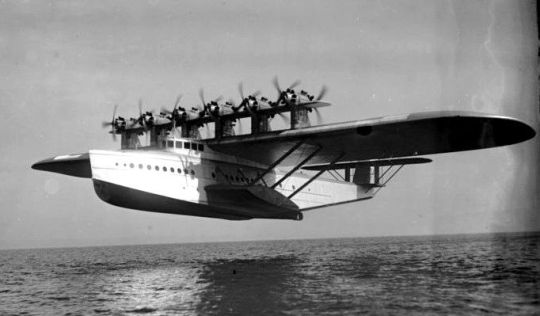
-A Do X in flight, circa January 1932. This was one of a number of Dornier flying boats to have a tandem engine configuration. | Photo: German Federal Archives
DEUTSCHLAND PFEILE
What became the Do 335 originated in 1939, while Dornier was working on the P.59 Schellbomber ("high-speed bomber"), which would have carried and equivalent load to a Ju 88 or Me 410, but featured a tandem engine arrangement. Work on the P.59 was cancelled in 1940, but Dornier had already commissioned a test aircraft, the Göppingen Gö 9, to test the feasibility of connecting a pusher prop via an extended drive shaft. The Go 9 was based on the Do 17 bomber, but scaled down 40% and with a cruciform tail. The test plane validated Dornier's designs, though the eventual fate of the Go 9 is not known (likely though, it was destroyed by Allied bombing or recycled).
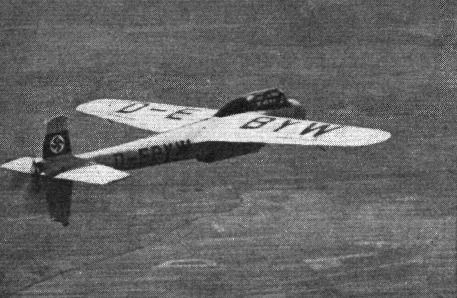
-The Göppingen Gö-9 motor glider, designed by Wolf Hirth. flying c.1941. | Photo: Flightglobal
The P.59's general design was resurrected in 1942 when the RLM requested a high-speed bomber with a 1,000kg payload. Dornier submission, designated the P.231, was awarded a development contract and the model number Do 335. Late in 1942, the requirements were changed from a Schnellbomber to a multirole fighter, which resulted in extensive delays while the designs were updated.
FLUGZEUGSPEZIFIKATIONEN
The Do 335 was 13.85m long, with a wingspan of 13.8m and a height of 5m. Empty, the plane weighed 7,260kg, while at max TO the weight was 9,600kg (10,000kg for the two-seat trainers and night fighter variants). Power was provided by two Daimler-Benz DB 603E-1 liquid-cooled V-12s developing 1,324kW each. Due to the situation in late-war Germany, the engines were fitted to run on 87 octane "B4" lignite-derived synthetic fuel, and MW50 boost was also available for additional speed. The basic fighter/bomber variant was armed with a singe 30mm MK 103 cannon firing through the spinner and two 20mm MG 151/20 autocannon mounted in the front engine cowl and synchronized to fire through the prop disc. A single 500kg bomb could be carried internally, and two pylons on the wings could be fitted with bombs, gun pods or drop tanks, with a total load of 100kg. During flight tests, the Do 335 hit 763kmh with boost (686kmh without), making it the fastest production fighter the Luftwaffe fielded during WWII. Under single-engine operations, the plane could still fly at 563kmh. Service ceiling was 11,400m, and under ideal conditions the plane could climb to 8,000m in 14 minutes 30 seconds. Due to concerns over a pilot striking the dorsal fin or the rear prop (a common concern in pusher designs before ejector seats became common), explosive charges would sever the fin and propeller before the pilot would bail out.
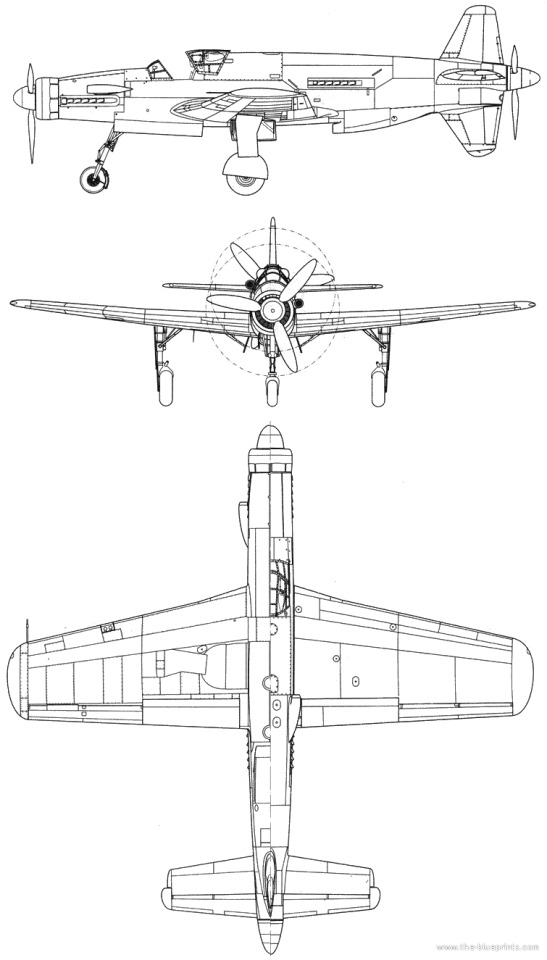
-Orthograph of the Do 335 A-1. | Illustration: Richard Ferriere
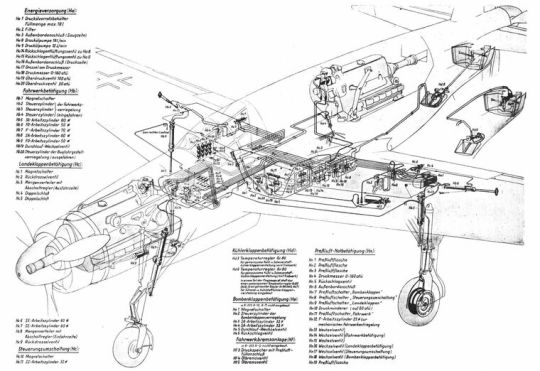
-Cutaway drawing of the Pfeil showing the engines, linkages, and landing gear actuators. | Illustration: Dornier
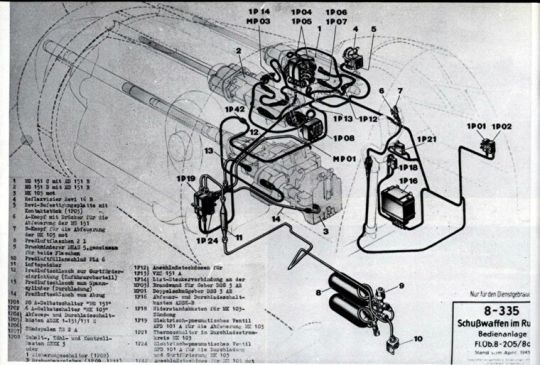
-Mounting locations of the 335's guns and associated equipment. | Illustration: Dornier
Maiden flight of the Do 335 V1 prototype was on 26 October 1943. A total of 27 flights were made with the V1, which uncovered a weakness in the landing gear, and issues with the main landing gear wheel-well doors saw them removed for the majority of the flights. The second aircraft, V2, first flew on 31 December 1943, and featured uprated DB 603A-2 engines as well as aerodynamic changes informed by the V1's test flights as well as wind tunnel tests. Maiden flight of the V3 pre-production aircraft was on 20 January 1944, which was fitted with DB 603G-0 engines, which produced 1,400kW at take off. The V3 was also fitted with two rear-view mirrors, alleviating blind spots caused by the location of the aft engine. A total of ten preproduction aircraft were then ordered, and in January the RLM ordered five more prototypes of the night fighter variant, later designated the A-6. By war's end, at least 16 prototypes of the Do 335 and related programs had flown, accumulating some 60 flight hours.
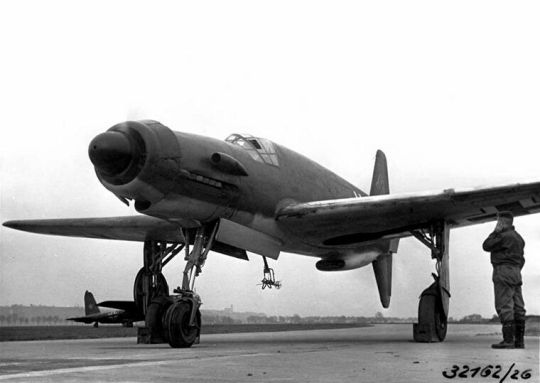
-The Do 335 V1 during testing in 1943 or '44. | Photo: Luftwaffe
Production of the Do 335 was given maximum priority under Hitler's Jägernotprogramm (Emergency Fighter Program), issued on 23 May 1944, and the competing He 219 Uhu ("eagle-owl") Nachtjäger theoretically freed up needed DB 603 engines for the Pfeil, but in practice Heinkel continued production of the 219A. Dornier's factories in Friedrichshafen and Munchen were anticipated to produce 120 and 2,000 Do 335s, of various configurations, by March 1946, but an Allied attack on Friedrichshafen destroyed tooling for the Pfeil, which resulted in a new line being set up in Oberpfaffenhofen. The first preproduction Do 335 A-0 model was delivered in July 1944, and construction of the first production A-1 model began in late 1944. As the war progressed, various models of the Do 335 proliferated (as happened often with late-war aircraft programs) as the Nazis sought to turn back the Allied forces:
Do 335 A-2: single-seat fighter-bomber aircraft with new weapon sights, later proposed longer wing and updated 1,471 kW (1,973 hp) DB603L engines.
Do 335 A-3: single-seat reconnaissance aircraft built from A-1 aircraft, later proposed with longer wing.
Do 335 A-4: single-seat reconnaissance aircraft with smaller cameras than the A-3
Do 335 A-5: single-seat night fighter aircraft, later night and bad weather fighter with enlarged wing and DB603L engines.
Do 335 A-6: two-seat night fighter aircraft, with completely separate second cockpit located above and behind the original.
Do 335 A-7: A-6 with longer wing.
Do 335 A-8: A-4 fitted with longer wing.
Do 335 A-9: A-4 fitted with longer wing, DB603L engines and pressurized cockpit.
Do 335 A-11/12: A-0 refitted with a second cockpit to serve as trainers.
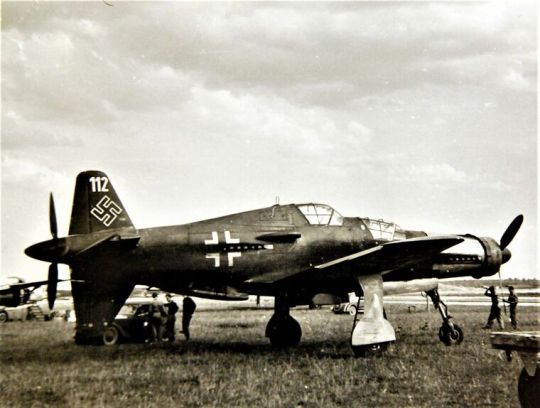
-A Do 335 A-12 trainer, known as the Ameisenbär ("anteater"), late in the war. | Photo: Luftwaffe
Do 335 B-1: abandoned in development.
Do 335 B-2: single-seat destroyer aircraft. Fitted with 2 additional MK 103 in the wings and provision to carry two standard Luftwaffe 300 litre (80 US gal) drop tanks.
Do 335 B-3: updated B-1 but with longer wing.
Do 335 B-4: update of the B-1 with longer wing, DB603L engine.
Do 335 B-6: night fighter.
Do 335 B-12: dual-seat trainer version for the B-series aircraft.
Do 435: a Do 335 with the redesigned, longer wing. Allied intelligence reports from early May 1945 mention spotting a Do 435 at the Dornier factory airfield at Lowenthal.
Do 535: actually the He 535, once the Dornier P254 design was handed over to Heinkel in October 1944; fitted with jet engine in place of rear piston engine.
Do 635: twin-fuselaged long-range reconnaissance version. Also called Junkers Ju 635 or Do 335Z. Mock up only.
P 256: turbojet nightfighter version, with two podded HeS 011 turbojet engines; based on Do 335 airframe.
In April 1945 the Allies captured the Oberpfaffenhofen factory in late April 1945, capturing 11 A-1 fighter/bombers and 2 A-12 trainers. That same month, a flight of four RAF Hawker Tempests, led by French ace Pierre Clostermann, encountered an unknown model of Do 335 over northern Germany at low altitude. The Pfeil pilot began evasive maneuvers, but Clostermann opted to not give chase as the enemy plane displayed superior speed. At the time of the German capitulation in 1945, 22 Do 335A-0, A-1 and A-11/12 aircraft were known to have been completed.
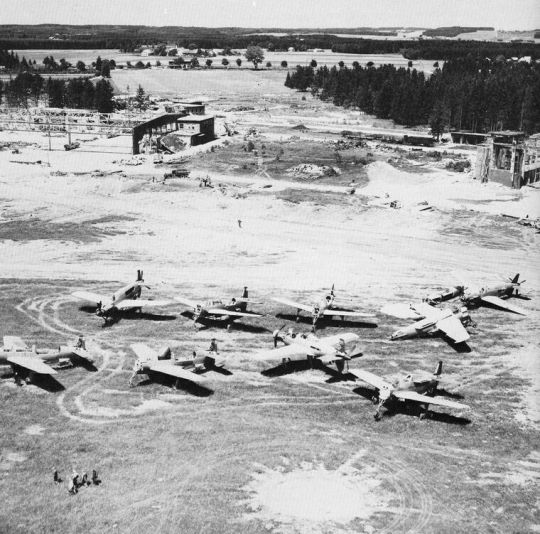
-Dornier Do 335 aircraft on the runway at Oberpfaffenhofen just after the end of the Second World War. | Photo: USAAF
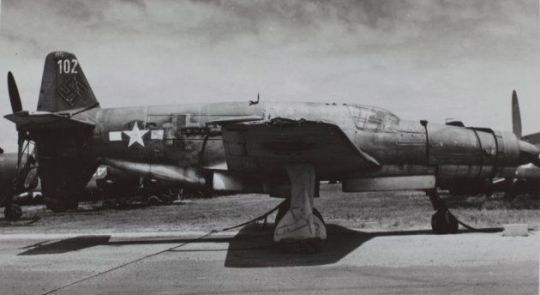
-A Do 335 after being captured by the US, with American markings painted over the Luftwaffe ones. | Photo: Charles Daniels Collection/SDASM Archives
At least two Do 335s were brought to the US under Operation LUSTY, with one, Do 335 A-0, designated A-02, with construction number (Werknummer) 240 102, and Stammkennzeichen ("factory radio code registration") VG+PH being claimed by the Navy for testing. The aircraft was transported on HMS Reaper along with other captured German aircraft, then shipped to the Navy's Test and Evaluation center at NAS Pax River. Another Pfeil was tested by the USAAF at Freeman Field in Indiana, but nothing is known about its fate. In 1961 VG+PH was transferred to the Smithsonian Institution, though it remained outside at NAS Oceana until 1974, when it was shipped back to the Dornier factory in Oberpfaffenhofen for restoration. Over the next year, volunteers from Dornier (some of whom worked on the aircraft originally) found that the explosive charges meant to sever the tail and aft prop were still installed and live, thirty years later. After work was completed the aircraft was placed on display at the Hannover Airshow from 1 to 9 May 1976, and afterwards it was on loan to the Deutsches Museum until 1988. The aircraft was shipped back the States after that, and is now on display at the Udvar-Hazy Center along with other German aircraft brought over during Lusty like the only known Ar 234 Blitz jet bomber and the partially restored He 219A Uhu.
#aircraft#aviation#avgeek#airplanes#airplane#aviation history#ww2 history#ww2 german aircraft#ww2 aircraft#ww2#ww 2 aircraft#ww 2#wwii history#wwii aircraft#wwiii#ww ii#ww ii aircraft#secret project#secret weapons of the Luftwaffe#luftwaffe#wonder weapons
39 notes
·
View notes
Video
Dornier Do-27B-1 U.9-65 / EC-CFS in Malaga by Johnny Comstedt Via Flickr: C/n 27-1004-193 built to Spanish Air Force marked U.9-65, later registered EC-CFS. In Museo Aeronáutico at Malaga Airport, Spain 16. November 2019.
2 notes
·
View notes
Photo

Messerschmitt Bf 109 F-4 from JG53, photographed from a flying boat Dornier Do-24 during a rescue operation near Malta on April 27, 1942.
#World war#world war 2#WWII#army#aircraft#aviation#plane#history#Messerschmitt Bf 109 F-4#Germany#Dornier Do-24#flying boat
27 notes
·
View notes
Photo

The German flying boat Dornier Do X in the New York harbour with the Manhattan skyline in the background. Most likely taken on the aircraft's arrival in New York on August 27, 1931.
147 notes
·
View notes
Text

#onthisday in 1939 a Blackburn Skua of No. 803 Naval Air Squadron operating from HMS Ark Royal scored the Fleet Air Arm's first aerial victory of #worldwar2, shooting down a Dornier Do 18.
@classicwarbirds via X
Blackburn Skua
Responding to the release of Air Ministry specification O.27/34 which requested designs for a naval dive-bomber, Blackburn along with Avro, Boulton Paul, Hawker and Vickers all submitted designs, however it would be Blackburn's Skua design which would see service and two prototypes were ordered during April 1935. The Skua design was revolutionary for the Fleet Air Arm for as well as being the country's first naval dive-bomber it would also be the first carrier aircraft to be of monoplane design.
The Skua would have a two man crew and featured folding wings, back along the fuselage, and both prototypes would be powered by the 840-hp Bristol Mercury IX engine, with the 9th February 1937 seeing the maiden flight of the first prototype. Prior to this 190 aircraft had been ordered in July 1936 under Specification 25/36.
Before being sent to the Aeroplane and Armament Experimental Establishment at Martlesham Heath the Skua would make an appearance at the RAF Display, Hendon on the 26th June 1937 and then on the 28th June 1937 at Hatfield at the Society of British Aerospace Companies display. Early reports from the A&AEE gave promising feedback of the Skua's handling and after gunnery trials the aircraft was sent to Gosport for ditching trials. The 4th May 1938 would see the first flight of the second prototype. The two prototypes would be designated Skua Mk I.
The Skua was a year behind schedule and to help speed up the production process some of the work was sub-contracted and due to the Bristol Blenheim receiving priority on the Mercury engine the Skua would instead be powered by the 890-hp Bristol Perseus XII and the 190 aircraft ordered were known as Skua Mk IIs. The 28th August 1938 saw the first production Skua Mk II fly at Brough and had a few minor changes to its design.
The Blackburn Skua Mk II had a top speed of 225 mph, range of 760 miles with a service ceiling of 20,200 ft. Armament was four 0.303-in machine-guns with one rear firing Lewis gun. Bomb load was 500lb. The Skua Mk II would enter Fleet Air Arm service in November 1938 when No. 800 Naval Air Squadron received theirs whilst No. 803 Naval Air Squadron received theirs in December 1938 where they would replace Hawker Nimrods and Hawker Ospreys serving aboard HMS Ark Royal (91). They would be followed by No. 801 Naval Air Squadron and No. 806 Naval Air Squadron which was formed during February 1940. These four squadrons being the only frontline ones that would operate the type.
It was No. 803 Naval Air Squadron who scored the Fleet Air Arm's first aerial success during the Second World War (1939 - 1945) whilst operating from HMS Ark Royal (91) when on the 26th September 1939 just off Heligoland, Germany they shot down a Dornier Do 18. The Skua showed its potential in the dive-bombing role when sixteen from Nos. 800 and 803 Naval Air Squadron flying from RNAS Hatston attacked and sank the German cruiser Konigsberg on the 10th April 1940 at Bergen harbour, Norway. Although the mission saw the loss of one aircraft. The Skua would also be involved in the Battle of France (10th May 1940 - 25th June 1940) when on the 31st May 1940 No. 801 Naval Air Squadron Skuas attacked pontoon bridges over the Nieuwpoort-Dunkirk Canal, France.
No. 801 Naval Air Squadron based at RAF Detling also flew a number of sorties to support the evacuation of Allied troops from Dunkirk, France, Operation Dynamo (26th May 1940 - 4th June 1940), alongside the Blackburn Roc, however the Roc and Skua by this time were obsolete. Whilst the Skua could compete with Axis bombers it didn't stand a chance against the modern fighters and as a result was removed from frontline service in 1941. The squadrons that operated Skuas were given newer aircraft with the Fairey Fulmar equipping Nos. 800 and 806 Naval Air Squadron whilst the Hawker Sea Hurricane equipped Nos. 801 and 803 Naval Air Squadron. After this the aircraft would be used as a target tug or for training.
In total 192 Blackburn Skuas were built.
Technical Details
500lb bombs
Click on the aircraft image to view a larger version.
Top Speed Range Service Ceiling Armament
Skua Mk I Designation given to the two prototypes.
Skua Mk II 225 mph 760 miles 20,200 ft four 0.303-in machine-guns
one Lewis gun
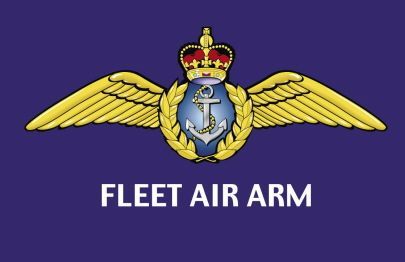
6 notes
·
View notes
Text

✈ (2/2). CASA C-127. Modelo a escala para motor de CO2. Envergadura: 540 m.m.
#throwback 📸 Año 1.986, de mi artículo publicado en el número 70 de la revista RC Model.
📄 El C-127 se fabricaba en la factoría de Construcciones Aeronáuticas S.A. en Tablada (Sevilla). Fue diseñado por Claudius Dornier con denominación propia DO-27.
Los alumnos, que estudiábamos allí en la Base como aprendices, lo veíamos a menudo en la línea de montaje.
Por esa razón lo elegí para diseñar este sencillo modelo y experimentar cómo se comportaba movido por un motor de CO2.
Por razones obvias no he podido reproducir su característica ala sin diedro.
#dornier#dornierdo27#aeromodelismo#balsamodel#aero#aeromodelling#airplanes#modelaircraft#hobby#balsa#balsawood#freeflight#construccionesaeronauticas#construccionesaeronauticassa#tablada#aerodromotablada#sevilla#rcmodel#artículo#photography#photo#airplanephotos#airplanephotography#scalemodel#scalemodels#scalemodelling#motor#co2
0 notes
Photo

From 1959 to 1974 Portugal fought a long running and eventually losing fight against the growing tide of African nationalism in its African possessions- the right-wing totalitarian government of Antonio Salazar threw the weight of the Portuguese armed forces into a series of conflicts throughout Portugal's African possessions. Their primary air weapon in this fight would be the tough Fiat G.91 which the FAP found to be well-suited to the harsh demands of African counterinsurgency warfare. Suppose the Wyvern was just as tough given its carrier roots and is employed by the FAP in Africa? This illustration shows such a Wyvern in the colors of the first G.91s that were deployed to Africa- gray/green upper surfaces with light blue undersurfaces. In the real world timeline, Esquadra 121 of the Forca Aerea Portuguesa operated the Dornier Do 27 light piston single in the FAC/observation and liaison role out of Osvaldo Viera Airport, the only international airport in Guinea-Bissau. The conflict there went from 1963 to 1974 when the Carnation Revolution in Portugal deposed the authoritarian regime in Lisbon. Peace accords soon followed between Portugal and Guinea-Bissau, allowing full independence after nearly 12 years of conflict. Brutal reprisals against those who supported the Portugeuse soon followed. I did this profile back in 2006 and is not up to my current artwork standards. Check out the #WhatIfWyvern_SentinelChicken tag for all the Wyvern aircraft I did in this series. #avgeek #aviation #aircraft #planeporn #thechickenworks (follow this tag to see more of my artwork) #Westland #Wyvern #instaaviation #aviationlovers #flight #Avgeekery #Adobe #Illustrator #aviationart #aviationillustration #IllustratorCC #Avgeekschoolofknowledge
#westland#avgeek#planeporn#thechickenworks#wyvern#whatifwyvern_sentinelchicken#illustrator#avgeekschoolofknowledge#illustratorcc#aviation#aviationart#aviationlovers#instaaviation#flight#adobe#aviationillustration#avgeekery#aircraft
5 notes
·
View notes
